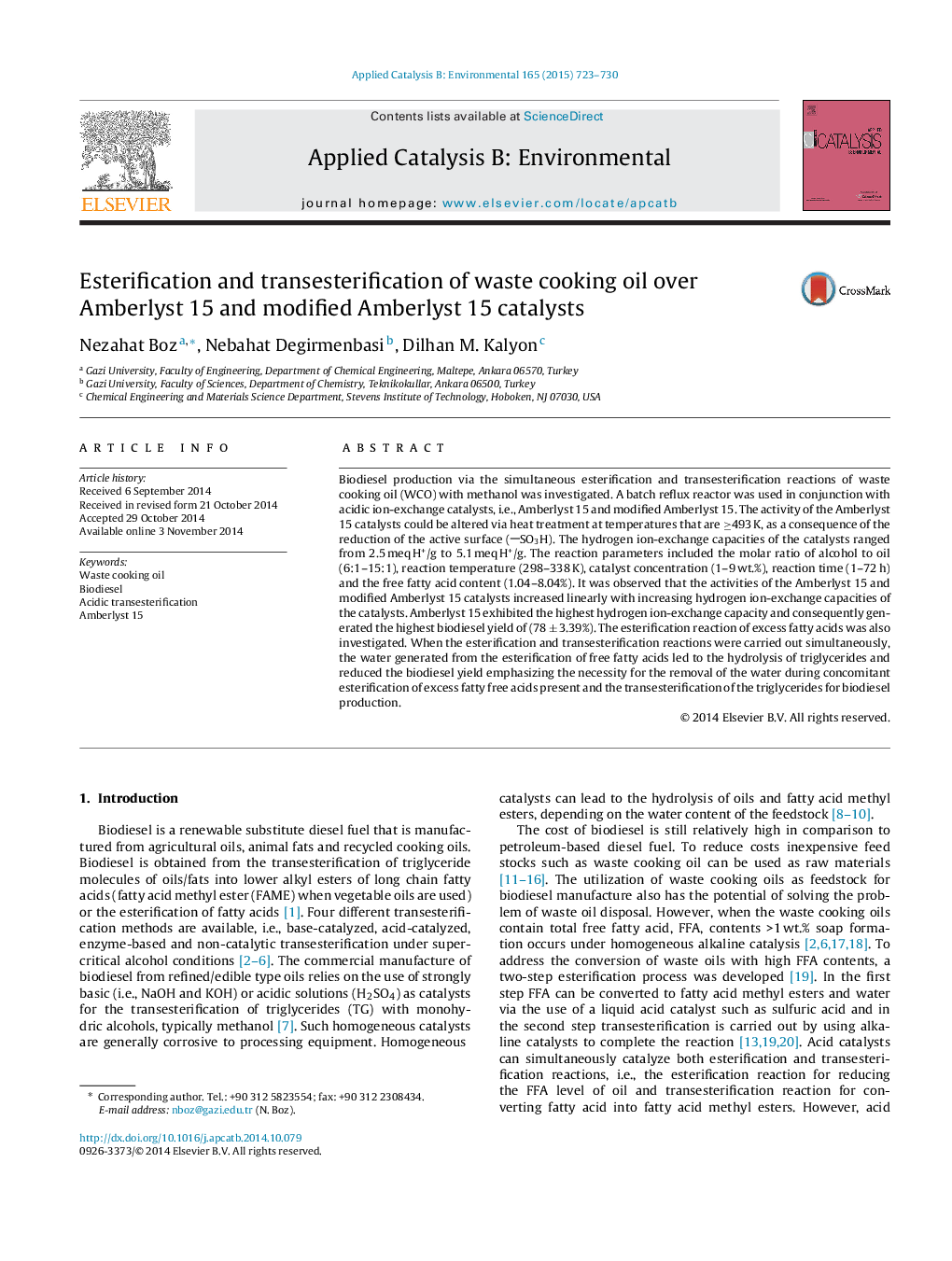| کد مقاله | کد نشریه | سال انتشار | مقاله انگلیسی | نسخه تمام متن |
|---|---|---|---|---|
| 45606 | 46416 | 2015 | 8 صفحه PDF | دانلود رایگان |

• Amberlyst15 was modified and used for transesterification and esterification reactions.
• Methyl ester yields, as high as 78%, were reached by using Amberlyst 15 catalyst.
• A constant free fatty acid, FFA, conversion of 40% was observed for all FFA levels.
• Amberlyst 15 would be only feasible if the water that is generated is removed.
• Activity of Amberlyst 15 did not deteriorate after reuse for at least three cycles.
Biodiesel production via the simultaneous esterification and transesterification reactions of waste cooking oil (WCO) with methanol was investigated. A batch reflux reactor was used in conjunction with acidic ion-exchange catalysts, i.e., Amberlyst 15 and modified Amberlyst 15. The activity of the Amberlyst 15 catalysts could be altered via heat treatment at temperatures that are ≥493 K, as a consequence of the reduction of the active surface (SO3H). The hydrogen ion-exchange capacities of the catalysts ranged from 2.5 meq H+/g to 5.1 meq H+/g. The reaction parameters included the molar ratio of alcohol to oil (6:1–15:1), reaction temperature (298–338 K), catalyst concentration (1–9 wt.%), reaction time (1–72 h) and the free fatty acid content (1.04–8.04%). It was observed that the activities of the Amberlyst 15 and modified Amberlyst 15 catalysts increased linearly with increasing hydrogen ion-exchange capacities of the catalysts. Amberlyst 15 exhibited the highest hydrogen ion-exchange capacity and consequently generated the highest biodiesel yield of (78 ± 3.39%). The esterification reaction of excess fatty acids was also investigated. When the esterification and transesterification reactions were carried out simultaneously, the water generated from the esterification of free fatty acids led to the hydrolysis of triglycerides and reduced the biodiesel yield emphasizing the necessity for the removal of the water during concomitant esterification of excess fatty free acids present and the transesterification of the triglycerides for biodiesel production.
Figure optionsDownload as PowerPoint slide
Journal: Applied Catalysis B: Environmental - Volume 165, April 2015, Pages 723–730